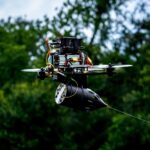
Ongoing testing of optionally-manned cargo trucks in leader-follower configurations that began two years ago has developed hardware and software to the point where the Army plans to use the systems and the soldiers that have been working with them in larger military exercises in 2022, an Army program official said on Thursday. Moreover, the leader-follower effort has generated a lot of interest within the Army and with some more development will be ready in the near future to go into…

 By
By 











